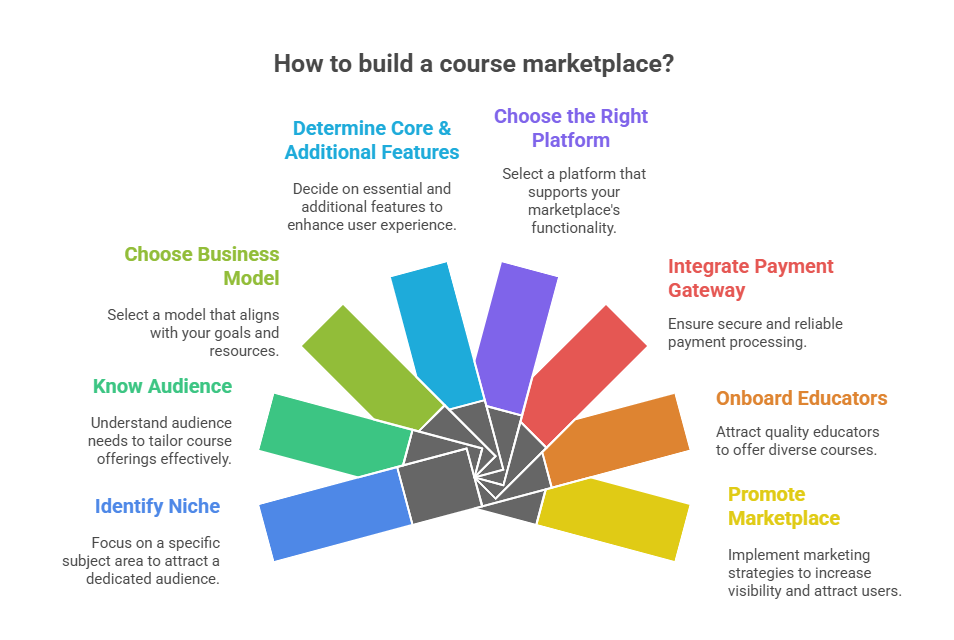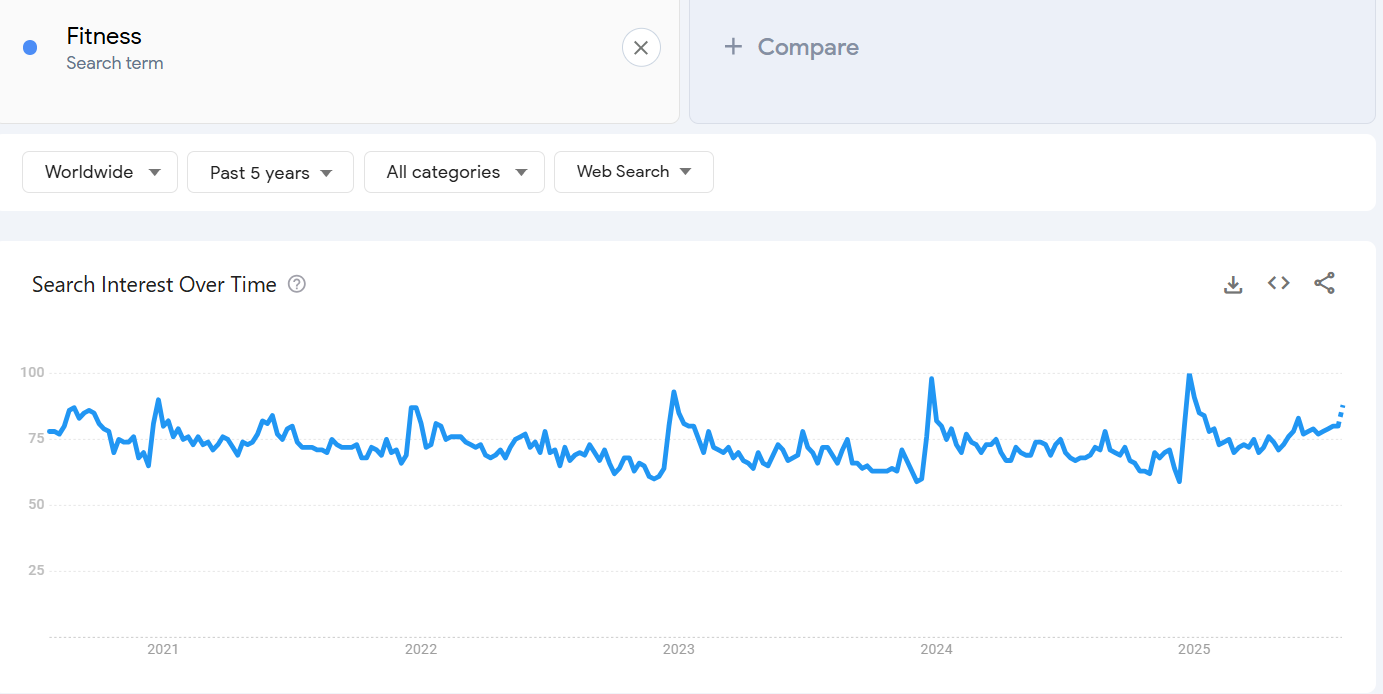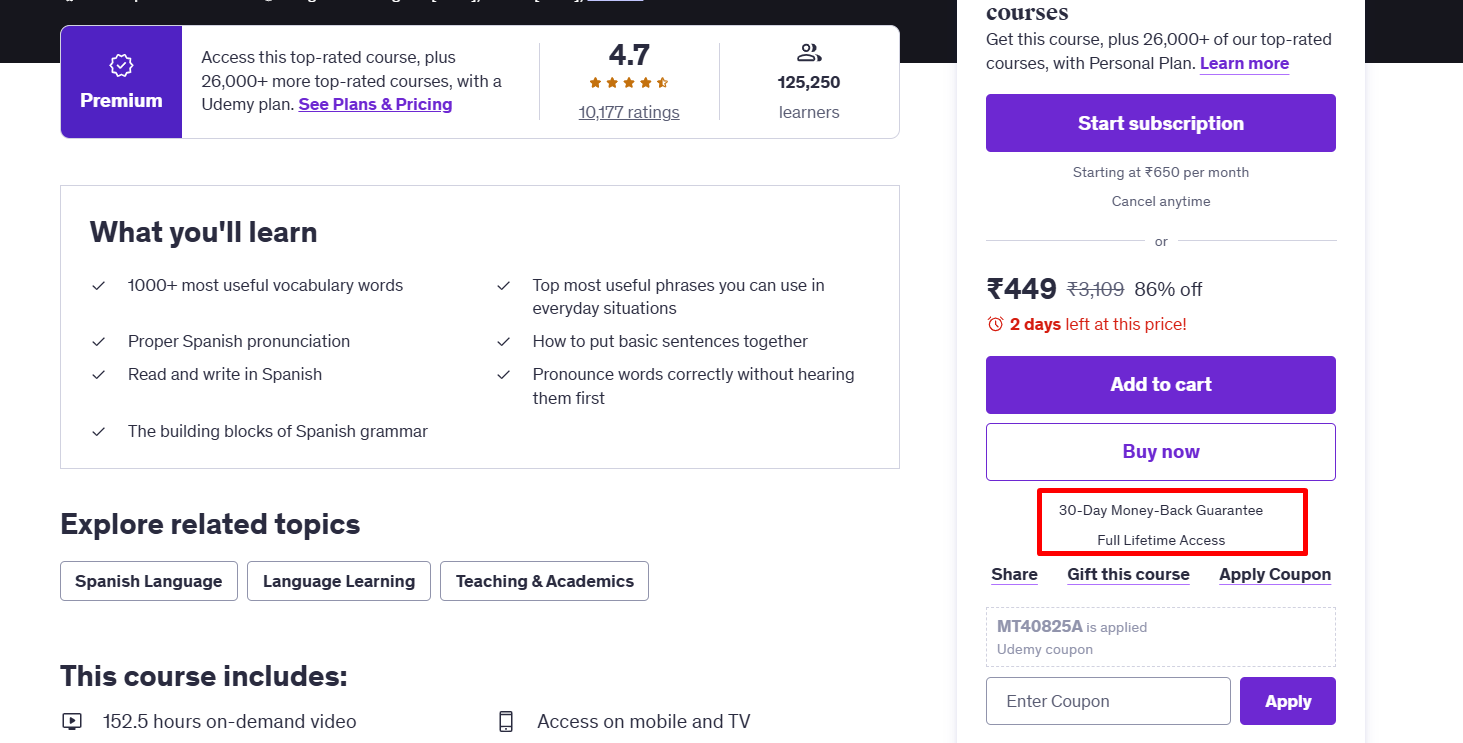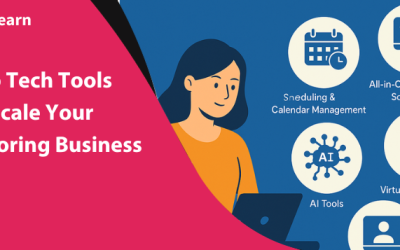How to Build a Course Marketplace: A Quick Start Guide
Learning never stops and with the recent technology advancements the education industry is ripe with innovation. So, if you’re an entrepreneur dreaming to start your own course marketplace like Udemy or Coursera, this is your moment to step in!
Coursera’s astounding $694.67 million revenue in 2024 proves the potential of the course industry. But, before moving on to the business plan, lay the groundwork by research and validation. Identify a real industry gap in your niche and solve it with your marketplace.
This blog is your comprehensive guide on how to build a course marketplace. So, are you ready to become the next titan of the educational industry?
Why Build a Course Marketplace?
Before we move on to the steps to build a course marketplace, let’s explore its benefits.
Here are the key reasons to build a course marketplace:
-
Revenue
Profitability is one of the most important benefits of the course marketplace. As a course marketplace, you can earn from diverse revenue streams, including pay-per-course, subscriptions, ads, and affiliate programs.
-
Increasing Market Demand
Courses are one of the most popular digital products, given their flexibility and convenience. Hence, there is a sizable audience for purchasing courses from different niches.
-
Build Your Brand Authority
Want to build your authority in the edtech industry? Building a course marketplace is a great way to position yourself as an expert.
-
Scalable Multi-Sided Platform
While a single course website includes courses from one instructor, the course marketplace includes multiple instructors.
-
Low Inventory Cost
Most of the content is made by creators, hence the financial and operational costs are minimal.
How to Build a Course Marketplace: 8 Easy Steps
Courses are evolving as the best digital product to sell, given their scalability and broad reach. The rising demand for upskilling and reskilling has increased the demand for courses further. Thus, starting a course marketplace is more profitable than ever.
That said, let’s navigate through the step-by-step process of building a course marketplace.

Step 1: Identify Your Niche
First off, you need to pick a niche for your course marketplace. There are many established players like Udemy and Coursera in the course marketplace. So, how can your course marketplace stand in this fierce competition?
Of course, only a profitable niche can win the test of time! The best way is to focus on a specific audience, industry, or field.
Here are few key strategies to pick a niche:
-
Think about your strengths, passion, and experience:
Are you an expert in a specific niche? Do you have years of experience in a specific field? Where do your passions and strengths intersect? This could be your unique business idea to create your course empire.
Let’s say you have a passion for fitness and have connections with the fitness community. You can start a fitness marketplace that combines both.
-
Perform competitor analysis:
Identify 2-3 top competitors in your niche. Evaluate your rival’s products, services, features and problems they are solving. When you understand their unique value proposition, can you differentiate your edtech business?
-
Look into market demand and profitability:
If there’s no one looking for your course, you won’t make enough profits. On the other hand, you cannot create courses for just a group of people, right? Evaluate the Total Addressable Market(TAM), niche market size, and growth rate.
Use tools like Google Trends to see demand in the last few years.
For example,

-
Identify the market gaps:
While brainstorming niches, you might struggle with ideas. And you might also wonder about all the niches to be competitive. In that case, find the shortfalls or potential gaps in the existing platforms. Perhaps, you can find a more practical approach to teach the subject or skill.
-
Narrow down your niche:
While you might think going broad helps you attract sizable revenue. But that’s not the truth: a niche makes design and marketing easier. Ask these questions to hone your niche. Is there an actual need for the product? Who is my target audience? How will you earn a profit from this business idea?
Evaluate the answers for each niche idea.
A few profitable niches that can pay big are technical & career-focused, fitness, self-improvement & productivity, education & learning, etc.
Lastly, validate niche profitability before potentially investing your time and money in the niche.
Step 2: Know Your Target Audience
The next step is to understand your target audience in-and-out. Defining your audience helps to connect with them better and also put forth the right marketing strategies.
Thus, you can define a brand identity that reflects their core values.
Who are you targeting? Understand your learners’ needs and challenges.
Creating a platform for everyone no longer works!
Ask questions to create a detailed persona of your ideal audience:
- What goals, interests, or challenges drive the audience to take up the course?
- Are they beginners or experts? Are they students, professionals, or entrepreneurs?
- What age group are you targeting? Is it the younger demographic or mid-professionals?
- How will your ideal audience use your content?
If you’re building a High-Intensity Interval Training (HIIT) platform, your target audience could be busy professionals or young adults (18-25 years).
Different ways to define your ideal audience:
- Create a buyer’s persona, including demographics (age, gender, income, education), psychographics ( interests, motivations, values, pain points), and online behaviour (buying preferences, purchase intention, purchase frequency)
- Leverage Google Analytics and keyword research tools to know your audience’s needs and interests
- Use surveys, subreddits, and Quora to gather information and know more about the audience.
- Find the target audience your competitor is interacting with.
Step 3: Choose a Business Model
What determines the success of your course marketplace? You might think it’s the traffic, number of courses, or funding received.
But it is how seamlessly your marketplace generates your revenue.
The right business model balances value with profitability. It keeps the incoming cash flow to scale and grow your platform.
Moreover, your business model could also become your unique selling point! Start with a single revenue stream, then later explore additional monetization streams for your marketplace.
The most common business models for your course marketplace include:
| Marketplace Model | Pros | Cons |
| Commission-Based (Earn commission per course sale) E.g., Udemy |
|
|
| Subscription-Based (Users pay a recurring fee to access a library of course) E.g., Skillshare |
|
|
| Freemium with upsells (Free lessons or course modules + paid full course access and certificates or live classes)
E.g., Coursera |
|
|
| Featured Listing and Ads Platform promotes specific instructors and courses (E.g., Udemy’s Marketing Boost Program, Skillshare) |
|
|
Step 4: Determine the Core and Additional Features
A great UI/UX design and compelling features definitely make a great course marketplace. Of course, the features depend on your niche and monetization streams.
But we have listed a few common features for your course marketplace. For easier understanding, let’s divide the features into three categories:
Learner Features
Login & Profile Management
Create an easy and seamless login for your course marketplace. Include social logins and 2-factor authentication to level up the security.
Course Search & Filters
Your course marketplace is an extensive course library of diverse courses. You need a comprehensive search tool to find your preferred course. Add filters like price, language, level, quizzes, etc., to make your course discovery easier.
Purchase Course
The course purchase must be a seamless and easy process. Offer different payment options like credit/debit cards, PayPal, mobile wallets, etc. Also, offer options to add to cart to purchase multiple courses at a time.
Request Refund
If learners are not satisfied with a specific course, make provisions to request a refund. Udemy offers a 30-day refund policy, where the learner can request a refund to the selected payment method or Udemy credits.

Progress Tracking
Want to motivate your learners to complete the course? Include visual progress bars to show the percentage of course completion.
Enrollment & Preview Options
Offer different enrollment options like free auditing, paid certificates, and EMI payments. Coursera offers different options, like previewing the first module for free, graded assignments, etc.
Bookmark/ Save for Later
With bookmarks and wishlists, learners can watch a particular video later. Learners can even make a playlist of all the videos to watch later.
Video Player & downloads
If your course module includes videos, offer a seamless video experience. Include speed control, captions, resume playback, etc.
Quizzes & assignments
A great way to make your courses interactive is to use quizzes & assignments. You can include it at the end of each course module or final assignment at the end of your course.
Course Completion Certificate
Do you want to show students to show their credibility? Offer certificates so they can use the course credibility to level up their career trajectory. As a course marketplace, you can even charge a separate fee for certificates.
Course Reviews and Ratings
When learners find a course satisfactory, they can give ratings and recommend the course. Course recommendations are a great boost to the course’s credibility.
Instructor Features
Easy Course Creation Tools & Interface
Include a drag-and-drop course builder, customizable templates, and multimedia management for easy course creation.
Set Course Price
Course pricing is an important way to position your course. While it’s all about finding the sweet spot, offer flexibility in pricing your course. You can either offer your courses for free or define a price range. Udemy’s deal program automatically optimizes the price and strategizes with the right discounts. Both Coursera and Udemy offer a Personal Plan subscription.
Coupons Manager
Coupons are an effective tool to drive sales and maximize your course enrollment. Offer fixed prices or percentage discounts. For seasonal offers, choose the start and end date of your coupon.
Payout Request
Every instructor desires a seamless payout process with timely payments. Create a cumulative threshold for payments like $20 or $25 that is held until reached. Common payment methods for Udemy are PayPal or Payoneer.
Earnings Dashboard
Include a revenue report and performance tab to track your earnings, sales and course performance. This helps to keep track of your earnings and make appropriate tweaks to maximize revenue potential.
Engagement Analytics & Progress Performance
Provide extensive tools and analytics to track specific course performance. Include different metrics, such as learner insights, course enrollments, course ratings, etc.
Admin Features
Instructor Management
Instructors are the heart of your course marketplace. Allow the admin to create, manage, and modify instructor accounts.
Course Management
Offer a centralized course management access to admins. This includes creating, managing, approving of courses, and publishing of courses.
Course-Category Management
Course categorization makes it easier to organize and find courses. You can create different categories based on your niche. Udemy offers different course categories like business, development, finance and accounting, etc.
Manage Payment Gateways
You need a secure and robust payment processor to handle all your platform payments. Choose a secure payment gateway like Stripe, PayPal, Authorize.net, etc. If your platform includes subscriptions or multi-currency payments, include a payment gateway with such options.
Platform Revenue Management
Tracking your platform revenue is important to understand if your courses are gaining enough traction. This involves keeping track of your commissions, total revenue, and other monetization streams.
Brand Settings
Defining your brand identity helps to position your marketplace in the industry. Offer adequate options to modify the platform logo, banner, or themes.
Communication (Email, Chat, Notifications)
Communication is one of the important aspects of the course marketplace. Provide the admin with the settings to add third-party integrations for email, live streaming, or CMS.
Optional Features
- Gamification
- AI-based course recommendations
- Community Forums
- Live Classes
- Add to Cart
- Subscriptions for 1-on-1 Classes or Courses
- Multi-language and currency options
Step 5: Choose the Right Platform to Build Your Course Marketplace
Once you determine the features of your course marketplace, it’s time to choose the right development approach. While there are several ways to build a course marketplace, choose one based on your business needs.
Here’s a quick comparison of different development approaches:
| Development Approach | Features |
| Ready-made marketplace scripts like Pinlearn |
|
| No-Code/Low-Code Platforms (Bubble.io, Outsystems) |
(* Not scalable enough or suitable for niche marketplaces) |
| Open-source LMS (Moodle) + Headless CMS (Strapi, Contentful, Sanity) |
(* Needs coding skills and technical expertise) |
| Custom-development (Build from scratch) |
(* Long development cycles as development and customization are separate,demands a skilled tech team, high-budget to build a full-fledged platform, requires extensive testing) |
Lack the technical expertise to turn your idea into a marketplace? Pinlearn helps you launch your self-hosted course marketplace in days minus the hassles of coding. From course-selling to robust payment integrations and hands-on analytics, take your course to the next level! Customize your marketplace as per your niche; all this at a one-time affordable price!
Step 6: Integrate a Secure Payment Gateway System
The next step is to integrate the right payment processor. Now, this isn’t just about accepting payments, but defining a great user experience.
Aim for an easy, intuitive, and quick payment process. Stripe, PayPal, Square, and Authorize.net are popular payment gateways.
Choose a payment gateway that fits your business needs. Allow different payment methods, such as credit/debit cards, digital wallets, regional payment gateways, and Buy Now, Pay Later.
Follow these steps to integrate a payment gateway into your platform:
- To start with, set up a merchant account.
- Obtain the required keys to connect your course marketplace with the payment gateway.
- Integrate your payment gateway with your course marketplace
- Simulate the payment gateway in different scenarios
- Once you’re ready, go live and start accepting real payments
Let’s discuss a few best practices for payment gateway integration! Use HTTPS, fraud detection, and 3D Secure or OTP for setting up your payment gateway.
Step 7: Onboard Educators onto your Course Marketplace
You might have curated the best design and befitting features for your course marketplace. But, what if the course quality isn’t up to the mark? Obviously, the courses won’t gain enough traction!
To create high-quality courses, hire subject experts in the specific niche.
Simply put, hire the best in business!
For example, Udemy, Skillshare and LinkedIn Learning host a wide range of courses taught by industry experts. These are basically university professors, experienced professionals, or creative professionals.
Here’s how to attract the best talent to your marketplace:
- Higher revenue share
- Easy course creation interface and tools
- Niche community, forums and groups
- Better control over branding, pricing, and
- Content guidelines and resources
- Tools to grow and engage your audience
- Build FOMO with social proof and testimonials
- Find the most relevant places where the audience hangs out, like subreddits, Facebook groups, LinkedIn, etc.
Create a streamlined onboarding process starting from the job description, recruitment page, identity verification, and vetting process.
Step 8: Promote Your Course Marketplace
Building your course marketplace isn’t enough; you need to spread the word about your platform! Without promoting, how would the audience get to know about your marketplace?
Find the places where your target audience frequently hangs out. Choose appropriate marketing strategies based on the places where you find your target audience.
Top marketing strategies for the course marketplace include:
-
Social Media
Different social media platforms work for different audiences. Choose the one that best fits your audience. For example, Facebook is best for sharing updates, building groups, and engaging the audience. Instagram is great for visual posts like testimonials, behind-the-scenes, or demos.
-
Content marketing
Content is still the king and a fantastic way to attract new learners to your marketplace! Find relevant topics that address learner needs and pain points. When you win their trust and credibility, you can attract traffic to your marketplace.
-
Email Marketing
Build an email list with your existing audience. Send promotional offers, free courses, or newsletters through effective email campaigns. Inform them about new and trending courses. Email marketing still has its charm!
-
Influencer Partnerships
Collaborate with popular niche influencers with a sizable audience. You can create reviews, sponsored content, and social posts to promote your platform.
-
Paid Ads
Want to broaden your platform reach? Create paid Google and social media ads to appear for specific keywords. Meta ads, YouTube ads, and Google Search ads are great for targeting specific audiences.
-
Free Courses & Resources
By offering free courses, you can entice the audience to your course marketplace. But, make sure to offer value through the courses to position yourself as an expert.
Affiliate marketing, networking events, coupons & referral programs are other promotional strategies.
What is the Technology Stack for Building a Course Marketplace?
So, which tech stack is best for building your course marketplace?
Here’s a quick comparison of different tech stacks used by popular course marketplaces:
| Course Marketplace | Tech Stack |
| Udemy |
|
| Coursera |
|
| SkillShare |
|
| Udacity |
|
| EdX |
|
Wrapping Up
Building a course marketplace is a profitable venture given the incredible demand for online courses. While marketplaces like Udemy and Coursera have proved the market potential, there’s fierce competition in the industry.
Your true revenue potential depends on choosing the right business model and features. We ‘ll find this step-by-step guide on how to build a course marketplace insightful!
Looking for a quick development approach to build your course marketplace? A highly-customizable white label marketplace script like Pinlearn offers you 100% control. Book your free 15-min consultation –Let’s build your course marketplace together!
FAQ-Related to How to Build a Course Marketplace
1. How to build a course platform?
Here’s a step-by-step plan to build your course marketplace:
- Identify your niche
- Know your target audience
- Choose a profitable business model
- Determine the features of the course marketplace
- Choose the right platform for building a course marketplace
- Integrate a secure payment processor
- Onboard educators to your course marketplace
- Promote your course marketplace
2. Are selling courses profitable?
Yes, selling courses is a profitable business. With evolving industry needs, technology advancements, and career pursuits, courses are more in demand than ever. Hence, if you start a course marketplace, it is sure to gain traction.
3. What is the technology stack for building a course marketplace?
The common tech stack to build a course marketplace includes:
- Front-End: React.js, Next.js
- Styling: Tailwind CSS
- Back-End: Node.js, Django
- Database: PostgreSQL, MongoDB
- Storage: AWS S3, Google Cloud Storage
4. How do course marketplaces make money?
Course marketplaces can monetize in the following ways:
- Commission or course sales: Marketplace earns a percentage of commission from the course sales.
- Subscriptions: Learners get access to a wide range of courses for a monthly or yearly fee. This offers a predictable and recurring income.
- Freemium and upsells: The basic content is free; users pay a fee to unlock certification, full course access, or advanced tools.
- Featured listing and ads: The platform can recommend specific courses for a fee. Further, marketplaces can earn by displaying ads in free content spaces like banner ads or as sponsored content.
- Affiliate marketing: Promote third-party tools or offers to learners and earn commissions on sales.





